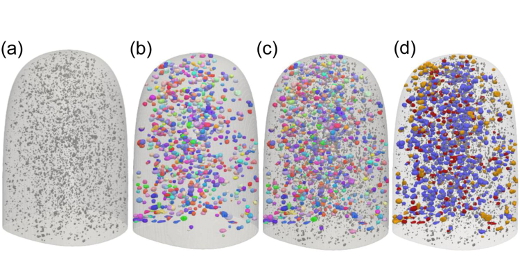
New insights into recrystallization enabled by 3D multimodal imaging
For studies of recrystallization mechanisms, important experimental evidence can be achieved through correlative analysis based on non-destructive 3D multimodal imaging. In particular the combination of laboratory diffraction contrast tomography (LabDCT) – giving the spatial distribution, size and crystallographic orientation of nuclei – and conventional absorption contrast tomography (ACT) – to reveal the spatial distribution and size of second-phase particle – enables addressing key open questions in recrystallization, such as where and with what crystallographic orientation nuclei form. 2D techniques like electron microscopy suffer from serious limitations when it comes to recrystallization: both particles and nuclei below the surface and in the layer polished away during sample preparation are ‘invisible’.
A group of researchers from Chongqing University and the Technical University of Denmark have recently pioneered using the combination of LabDCT and ACT to study particle stimulated nucleation (PSN), a mechanism suggested to explain how second-phase particles affect recrystallization. The investigations were headed by Prof. Dorte Juul Jensen, who has a long track record in applying novel, innovative characterization techniques to study evolving microstructure in metals, in particular during recrystallization and grain growth. For the aluminum alloy AA5182 their experimental results revealed PSN to be the dominant nucleation mechanism, resulting in nuclei of random orientation.
